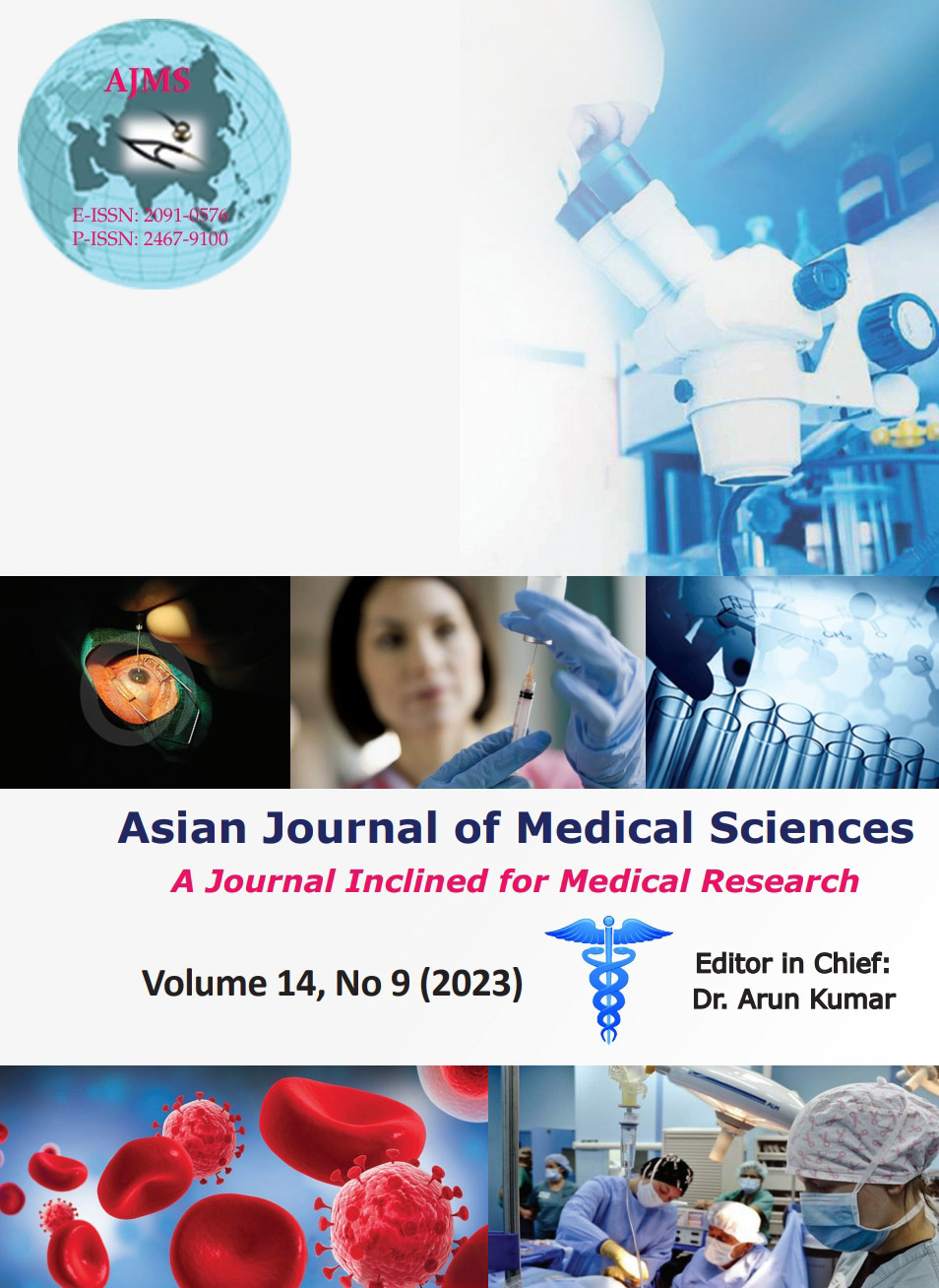A clinical study with changes in microbiological flora in chronic rhinosinusitis
Keywords:
Chronic rhinosinusitis; Staphylococcus aureus; Methicillin-resistant Staphylococcus aureus; MucormycosisAbstract
Background: Chronic rhinosinusitis (CRS) is characterized by mucous membrane inflammation that lines the paranasal sinuses and nasal cavity for at least twelve consecutive weeks. Microbes play a major role in pathogenesis. The treatment objectives are to reduce mucosal edema, restore paranasal sinus ventilation, and eliminate infectious pathogens.
Aims and Objectives: (1) To study the presenting clinical features of chronic sinusitis. (2) To study the changes in microbiological flora.
Materials and Methods: The study was conducted on 202 patients in the Department of ENT and Microbiology (JNMCH) from December 2020 to 2022. Patients above the age of 10 years were evaluated in this study. Those who received antibiotics in the last week of the presentation and those resistant to medical therapy were excluded. Patients were subjected to a detailed history, the clinical examination, and a radiological examination. Under all aseptic precautions and after the patient’s informed consent, the sample was taken from the middle meatus area for culture and sensitivity.
Results: The study had a male predominance (71.28%), with the maximum number of patients in the age group 21–30 years (38.11%). The most common clinical features were nasal obstruction (96.03%) and mucopurulent discharge (100%). The most common isolate was Staphylococcus aureus (45.13%).
Conclusion: Bacterial infection is a major etiological factor in CRS. Screening for S. aureus carriers may be an alternative to decrease the infection of S.aureus. There is a statistically significant increasing trend for methicillin-resistant S. aureus (19.46%) and fungal sinusitis (13.36%).
Downloads
Downloads
Published
How to Cite
Issue
Section
License
Copyright (c) 2023 Asian Journal of Medical Sciences

This work is licensed under a Creative Commons Attribution-NonCommercial 4.0 International License.
Authors who publish with this journal agree to the following terms:
- The journal holds copyright and publishes the work under a Creative Commons CC-BY-NC license that permits use, distribution and reprduction in any medium, provided the original work is properly cited and is not used for commercial purposes. The journal should be recognised as the original publisher of this work.
- Authors are able to enter into separate, additional contractual arrangements for the non-exclusive distribution of the journal's published version of the work (e.g., post it to an institutional repository or publish it in a book), with an acknowledgement of its initial publication in this journal.
- Authors are permitted and encouraged to post their work online (e.g., in institutional repositories or on their website) prior to and during the submission process, as it can lead to productive exchanges, as well as earlier and greater citation of published work (See The Effect of Open Access).




